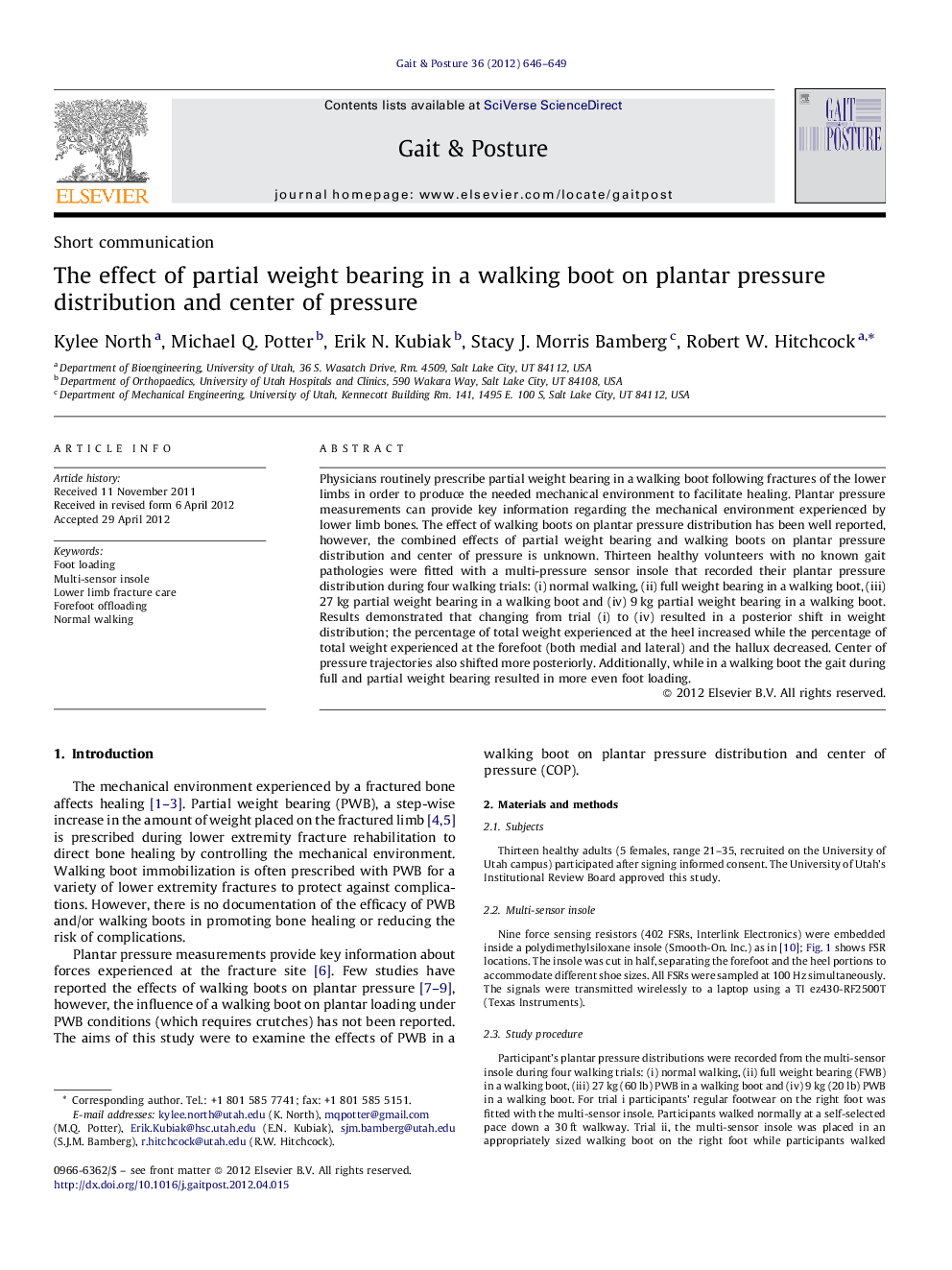| Article ID | Journal | Published Year | Pages | File Type |
|---|---|---|---|---|
| 6207888 | Gait & Posture | 2012 | 4 Pages |
Physicians routinely prescribe partial weight bearing in a walking boot following fractures of the lower limbs in order to produce the needed mechanical environment to facilitate healing. Plantar pressure measurements can provide key information regarding the mechanical environment experienced by lower limb bones. The effect of walking boots on plantar pressure distribution has been well reported, however, the combined effects of partial weight bearing and walking boots on plantar pressure distribution and center of pressure is unknown. Thirteen healthy volunteers with no known gait pathologies were fitted with a multi-pressure sensor insole that recorded their plantar pressure distribution during four walking trials: (i) normal walking, (ii) full weight bearing in a walking boot, (iii) 27Â kg partial weight bearing in a walking boot and (iv) 9Â kg partial weight bearing in a walking boot. Results demonstrated that changing from trial (i) to (iv) resulted in a posterior shift in weight distribution; the percentage of total weight experienced at the heel increased while the percentage of total weight experienced at the forefoot (both medial and lateral) and the hallux decreased. Center of pressure trajectories also shifted more posteriorly. Additionally, while in a walking boot the gait during full and partial weight bearing resulted in more even foot loading.
⺠Ambulation in a walking boot produced a more even foot loading pattern. ⺠Partial weight bearing (PWB) further evened the foot loading pattern. ⺠Walking boot and PWB resulted in a posterior shift in weight distribution.
